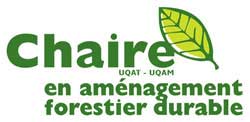Abstract Understanding historical dynamics of peripheral populations over the Holocene provides key insights to anticipate species responses to ongoing global changes. A marginal stand at the leading edge of sugar maple (Acer saccharum) range was hereby investigated to infer the Holocene dynamics of sugar maple, red maple (Acer rubrum), eastern white pine (Pinus strobus), three prominent temperate tree species of the boreal?temperate forest ecotone in eastern Canada. Soil macrofossil charcoal analysis of 25,595 charred wood particles revealed that white pine is detected at this marginal temperate forest site since the early Holocene, red maple since the mid-Holocene and sugar maple since the late-Holocene. The transition from the warmer mid-Holocene to the cooler late-Holocene was marked by a decrease of white pine, which was expected because the environmental envelope of temperate species shifted southward in response to lower mean temperatures of the Neoglacial. In contrast, the abundance of sugar and red maples increased during the cool late-Holocene period. There was a significant lag between the establishment of maples, whereby the hardier red maple was found since the warmer mid-Holocene, while the cold intolerant sugar maple was only detected during the cooler late-Holocene. A shift in the fire regime, a disruption of coniferous priority effects in the soil, as well as the introduction of shared mycorrhizal fungi might tentatively explain the late establishment of maples and the migration lag between the two species. Synthesis. As temperate tree species require warmer temperatures than boreal species, some thermophilous species such as white pine increased in abundance at their northern edge during historically warmer periods. Our data reveal that not all temperate species behaved accordingly: maples were scarce during the warm mid-Holocene, while their abundance increased during the cool late-Holocene. A migration lag suggests that an earlier arrival of generalist species such as red maple might be required to facilitate the later establishment of specialists such as sugar maple. The historic decoupling between macroclimatic trends and temperate species range shift sheds new light on the potential responses of the boreal?temperate ecotone facing modern-day anthropogenic climate change.

